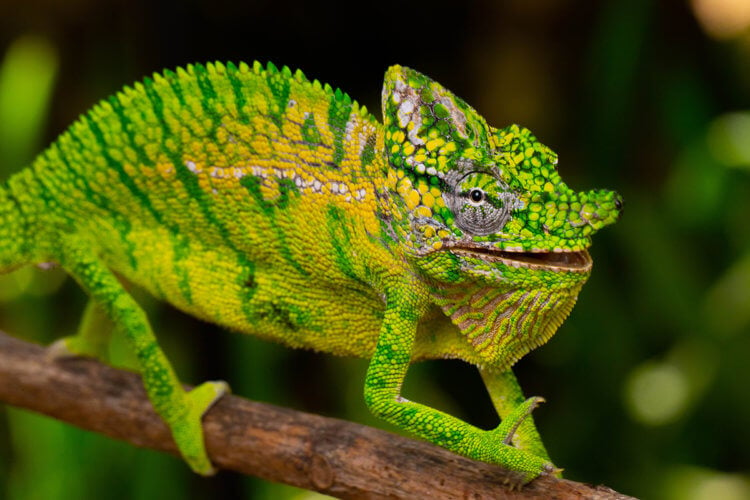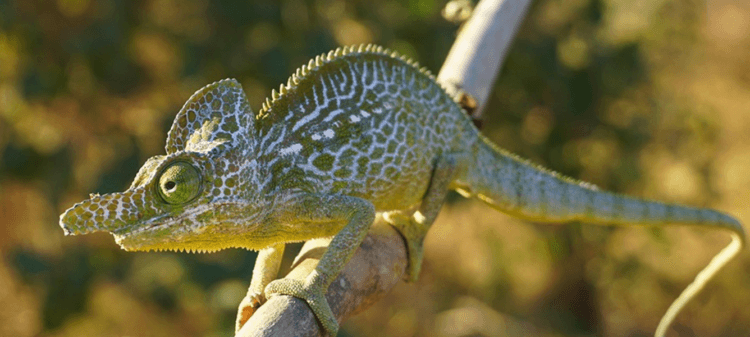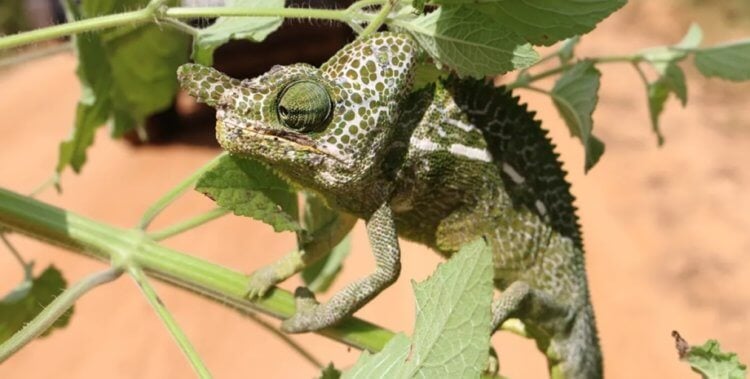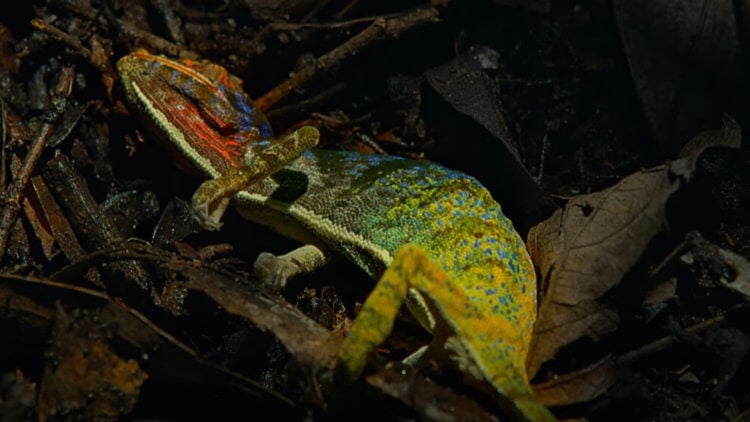There is one unique animal on Earth that completely dies out every year, but is reborn every time. Moreover, this extinction is not associated with a reduction in population, but is an evolutionary feature that allowed this creature to adapt to environmental conditions. We are talking about a reptile known as the Labordi chameleon (Furcifer Labordi), which lives in the southwestern part of Madagascar. The lifespan of this animal does not exceed 4-5 months, while for several months a year this species simply does not exist. Due to their short lifespan, Laborde's chameleons are also one of the shortest-lived four-legged vertebrates.

Laborde's chameleons begin their lives by hatching synchronously from their eggs at the start of the rainy season in November. They reach adult size by January. In less than two months, chameleons increase in size by 4-5 times, which makes them record holders for the fastest growth rate.
Furcifer Labordi reaches sexual maturity at the age of less than two months, as reported in a 2017 study. The body length of males reaches 9 cm, and females grow up to 7 cm in length.

Furcifer Labordi males reach 9 cm in length
After mating, chameleons begin to age quickly, and by the end of the rainy season, which comes in March, they die out en masse. Thus, the eggs of these creatures develop longer than their life on earth lasts.
Why are Laborde's Chameleons becoming extinct
According to IftScince, the females die just hours after they lay their eggs and cover them with sand. The reason is that they spend all their energy producing eggs. Obviously, a lot of energy is required, since the eggs need to survive a long drought underground. Chameleons spend 8-9 months in the form of a developing embryo, that is, as mentioned above, they spend most of their life in the egg.

Laborde's chameleons die with the end of the rainy season
The short lifespan is an adaptation of these creatures to their environment. This feature allows them to survive the hot, dry season. In fact, they skip it, being in the egg at this time, as a result of which they do not experience any difficulties associated with sudden seasonal climate changes.
It must be said that in different regions of Madagascar the time of extinction of these chameleons is different. In warmer, more humid areas, adults live slightly longer. And once, scientists even discovered that a female, after an abnormally long rainy season, was able to live longer than usual, as a result of which she waited until the next breeding season.
Scientists were also able to artificially prolong the life of males by keeping them in favorable conditions. However, in the wild, as a rule, after reproduction, all adults die out. Therefore, for several months of the year there are no Furcifer Labordi chameleons in the world.

At the moment of death, the skin of the Laborde chameleon shimmers in different colors
Chameleons change skin color when they die
One day, when scientists wanted to trace the entire life cycle of a chameleon and film it on camera, they discovered one unusual feature that had never been observed in nature before. In the last minutes of its life, the chameleon's skin became covered with chaotic multi-colored patterns. As Live Science reports, before death, a chameleon's skin shimmers and changes color, like fireworks.
This feature has a fairly simple explanation. To change skin color, chameleons expand or contract special cells that contain nanocrystals. This changes the way these nanocrystals reflect light. Let us remind you that using this principle, scientists even created a special material that can change color.

When the animal dies, nerve signals begin to be transmitted chaotically and change the shape of skin cells, resulting in chaotic multi-colored patterns. According to scientists, in the last minutes of life, changing the color of their skin, chameleons seem to utter their last words.
Follow the link to our ZEN CHANNEL. We have prepared for you a lot of interesting, exciting materials dedicated to science.
Finally, we suggest you familiarize yourself with another equally unusual chameleon. Its peculiarity lies in its size. The length of this animal does not exceed 25 millimeters. By the way, these creatures were also discovered on the island of Madagascar.